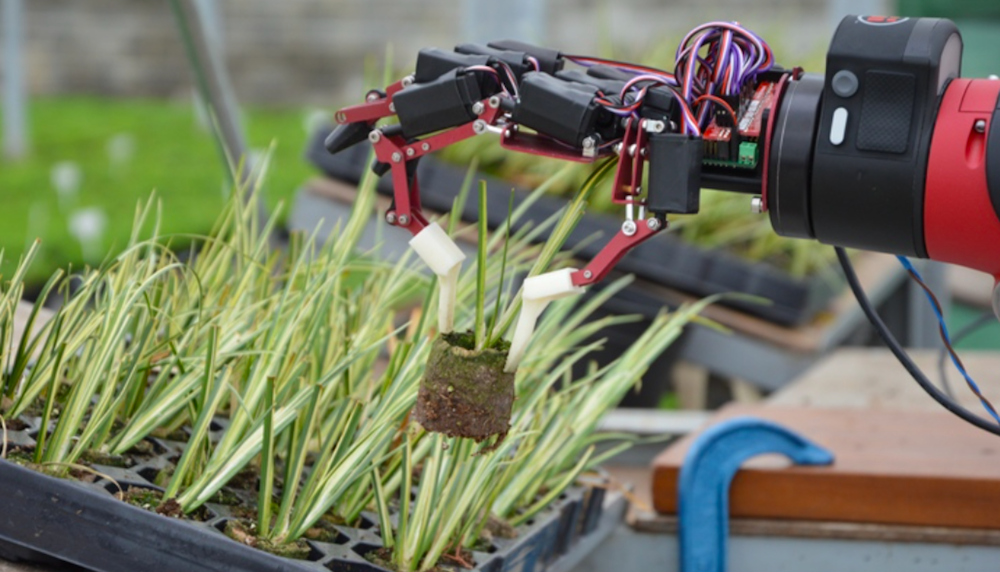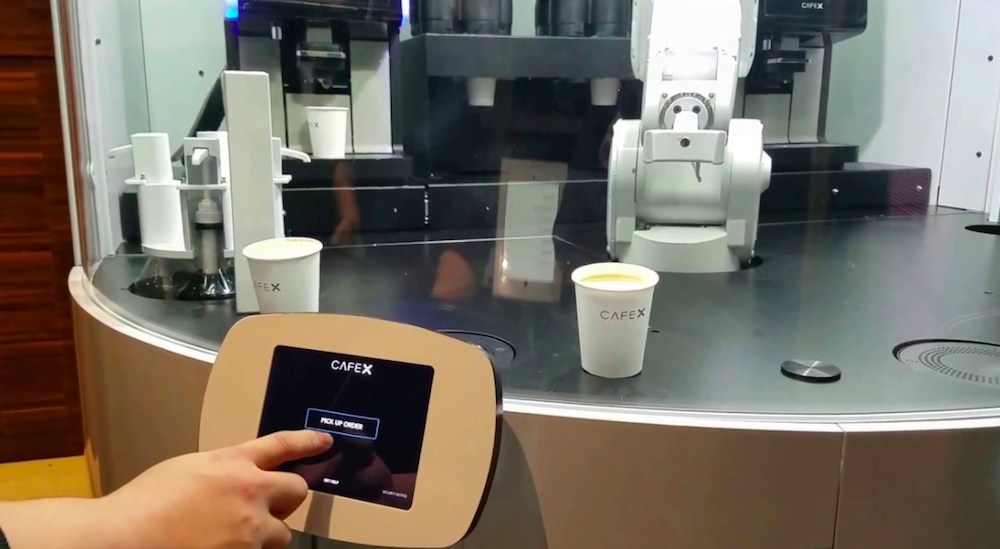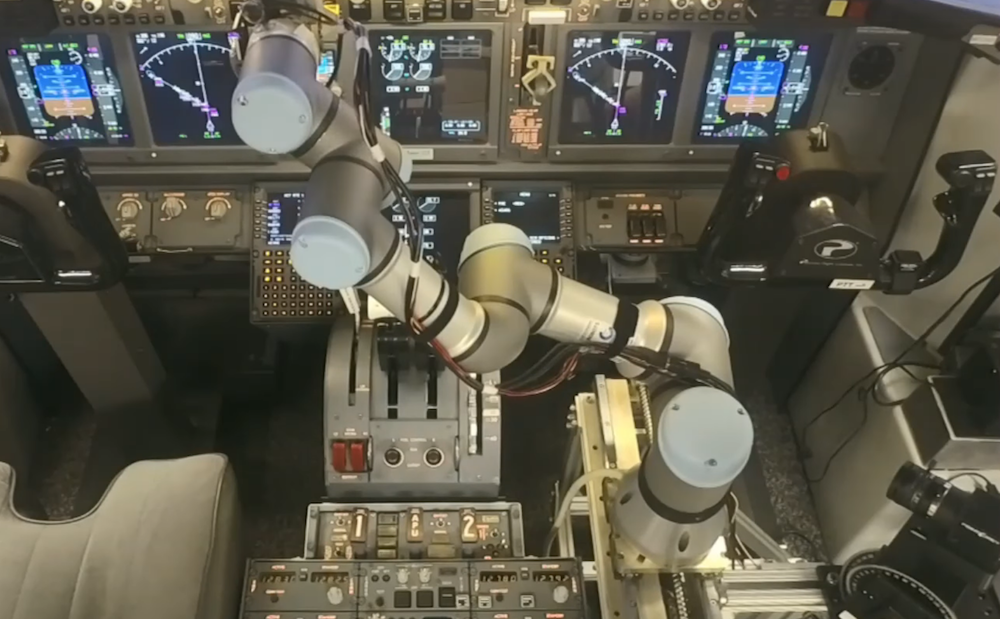The global market for collaborative robots (cobots) will grow from $710 million in 2018 to $12.3 billion in 2025. While much of that growth will continue in automotive, electronics, and other manufacturing, the safety and flexibility collaborative robots will bring robotics to an ever-wider range of users.
Here are some unconventional examples of how cobots can serve in areas beyond manufacturing, pick-and-place operations, and machine tending.
Cobots to pick plants

The GROWBOT (Grower-Reprogrammable Robot for Ornamental Plant Production Tasks) project at King’s College London is using a Sawyer cobot arm to help greenhouse workers pick plants. GROWBOT is intended to let non-expert users work with robots for repetitive tasks and to help relieve shortages of seasonal labor. It uses machine learning to flexibly automate the handling of seedlings, herbs, and other plants.
“Handling plants involves a great amount of uncertainty in sensing, and there’s a reasonably high performance requirement in terms of throughput,” said Aran Sena, a postgraduate student at King’s College London. “Additionally, growers typically will have several varieties in production to meet consumer demands in relatively small batch sizes, and [they] will have different requirements for packaging and presentation for each consumer – a challenge which can come up even in high-volume production — adding further challenges to automation.”
Do you want fries with that?
As robots move from food processing into restaurants, the equipment must still be clean, consistent, and efficient. Miso Robotics’ Flippy uses a cobot arm with a variety of end-of-arm tools, its Miso AI platform, and cloud-based monitoring functions.
The burger-flipping robot can work on a grill or fryer, comply with OSHA and food-safety standards, and run for up to 100,000 hours of continuous uptime, according to the company.
“While our systems are designed to work with just about any six-axis robotic arm, we are currently using Fanuc North America arms,” said David Zito, co-founder and CEO of Miso Robotics. “They are made collaborative via our unique design made specifically for commercial kitchen work.”
Unlike most robots in factories, Flippy can work alongside people in any commercial kitchen. It was tested last year at CaliBurger, Walmart headquarters, and Dodger Stadium.
The major fast-food and fast-casual chains are evaluating such robots to stay competitive, especially as they face escalating worker shortages.
Cobot bartenders, baristas
Royal Caribbean Cruises has robot bartenders on several ships, and several hotels and pubs worldwide have used robot bartenders. (To be fair, some are caged off to avoid broken glass or drunk patrons.)
Makr Shakr, which provides the robot bartenders to Royal Caribbean, uses KUKA arms.
Even if you’re not nursing a hangover, at a Café X kiosk in Hong Kong or San Francisco, you can get a coffee made by a Mitsubishi cobot. This is arguably the most public-facing collaborative robot application, but at $25,000, the arm won’t be on household kitchen counters anytime soon.

Cobot surgeons
Researchers at Nottingham Trent University (NTU) are developing “Scoliobot” for precise spinal surgery. They are currently working on 3D-printed models with two UR5 cobots from Universal Robots. The team is also using augmented reality to provide surgeons with live feedback.
One robot arm, dubbed the Datum Robot, follows a patient’s spine and collects data on how the patient moves. The other, called the Tooling Robot, automatically adjusts to drill holes for realignment rods to be placed in vertebrae.
“It is paramount that spinal procedures are carried out with total accuracy in order to minimize what can be substantial risks to a patient,” said Prof. Bronek Boszczyk, head of spinal surgery at Benedictus Krankenhaus Tutzing and visiting professor at NTU. “This technology has the potential to minimize those risks by performing a key part of the operation with accuracy which cannot be achieved by a human hand.”
Cobot pilots
Aurora Flight Sciences, a Boeing company, uses a UR3 arm as part of its Robotic Copilot concept. The goal is “to create a portable and extensible hardware and software toolbox introducing of new levels of automation across a wide variety of military and civilian aircraft that ultimately reduce crew requirements.”
The Aircrew Labor In-Cockpit Automation System, or ALIAS, would combine sensors, a tablet interface for pilots, and flight-control and mission software. The cobot enables it to interact with cockpit controls designed for human pilots.

ALIAS is intended to help pilots perform at peak ability, so that they’re not bored or overtaxed. Another design goal is that training it to a new aircraft would take only a month.


Leave a Reply
You must be logged in to post a comment.